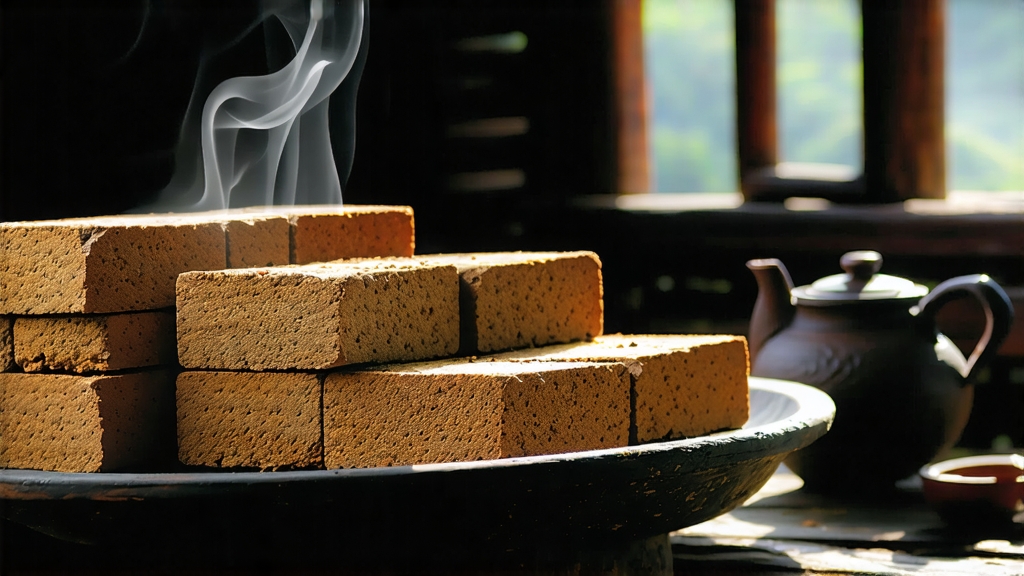
Tucked away in the humid, karst-pocked mountains of southern China’s Guangxi Zhuang Autonomous Region, Liu Bao tea has spent four centuries quietly evolving from a coolie’s thirst-quencher to a collector’s darling. International drinkers who can rattle off the differences between shou and sheng pu-erh still pause when Liu Bao is poured, mistaking its glossy ebony leaves for a Yunnan dark tea or, worse, a black tea from Assam. Yet one sip—silky, sweet, laced with betel nut, camphor and the faintest whisper of cinnamon—announces a personality all its own. This article invites you to meet Liu Bao on its own terms: its origin myth, its sub-styles, its microbe-driven metamorphosis, and the simple ritual that coaxes its mountain soul into your cup.
-
From Border Tea to “Golden Flower” Currency
Liu Bao literally means “Six Forts,” a nod to the six stockaded villages that once guarded the trade route between the Pearl River Delta and the ancient Lingnan capital of Wuzhou. During the Qing Yongzheng era (1723–1735), the imperial court designated Liu Bao as one of the “famous teas for border trade,” pressing it into 37-kilogram bamboo baskets and floating it down the Xun River to Hong Kong, where clipper ships carried it to Malaya, Indonesia and the tin mines of Kuala Lumpur. Coolies brewed it in kerosene tins to neutralise the metallic taste of river water; mine owners discovered that the same microbes mellowing the tea also prevented dysentery. By the 1950s, Liu Bao had become a de-facto currency among overseas Chinese, traded for rice, rubber and even opium. When Malaysia’s tin boom collapsed in the 1980s, warehouses full of forgotten baskets quietly aged into liquid antiques, their paper tickets still legible beneath spider webs and dust. -
The Terroir Triangle: Mist, Rock and River
Liu Bao’s heartland lies within a 30-kilometre radius of the town of Liubao in Cangwu County, where the Tropic of Cancer cuts across granite peaks. Daytime temperatures hover around 28 °C; nighttime fog rolling off the Qilian River keeps humidity above 85 %. The soil is a reddish laterite rich in kaolin and iron oxide—identical to the terroir that gives Bordeaux its gravelly edge. Local tea farmers identify three micro-zones:- Gua Jiang (Melon River): highest elevation, smallest leaf, orchid fragrance.
- Tang Ping (Pond Flat): middle slope, purple bud cultivar, thick malt.
- He Kou (River Mouth): alluvial terrace, broad leaf, camphor finish.
Each zone is harvested in three waves—early April (pre-Qingming), late May (grain rain) and mid-July (small heat)—but only the spring pick is deemed worthy of long-term aging.
-
Crafting the “Wet Pile” Without Drowning the Leaf
Unlike shou pu-erh, which is piled 1.2 metres high and doused with 30 % water, Liu Bao uses a gentler “wet stack” (闷堆) of 60–70 cm and 18–22 % moisture. Fresh leaves are carried in bamboo baskets from mountain to factory within two hours to prevent enzymatic browning. Sha Qing (kill-green) is done in a 200 °C wok for exactly 3.5 minutes; the master’s cue is the audible “pop” of leaf cells rupturing, followed by a whiff of toasted soybean. While still warm, the leaves are rolled for 20 minutes on a bamboo screen until they resemble tiny black snails. The critical step is the 6–8 hour wet stack: workers cover the leaf with wet cotton cloth, allowing indigenous microbes—Bacillus subtilis, Aspergillus niger, Blastobotrys adeninivorans—to raise the temperature to 45 °C. The pile is turned every 45 minutes to inject oxygen; when the leaf edge turns chestnut-brown and a sticky “golden flower” (Eurotium cristatum) appears, the tea is quickly dried over pine charcoal at 80 °C. Finally, the tea is steamed and packed into plaited bamboo baskets